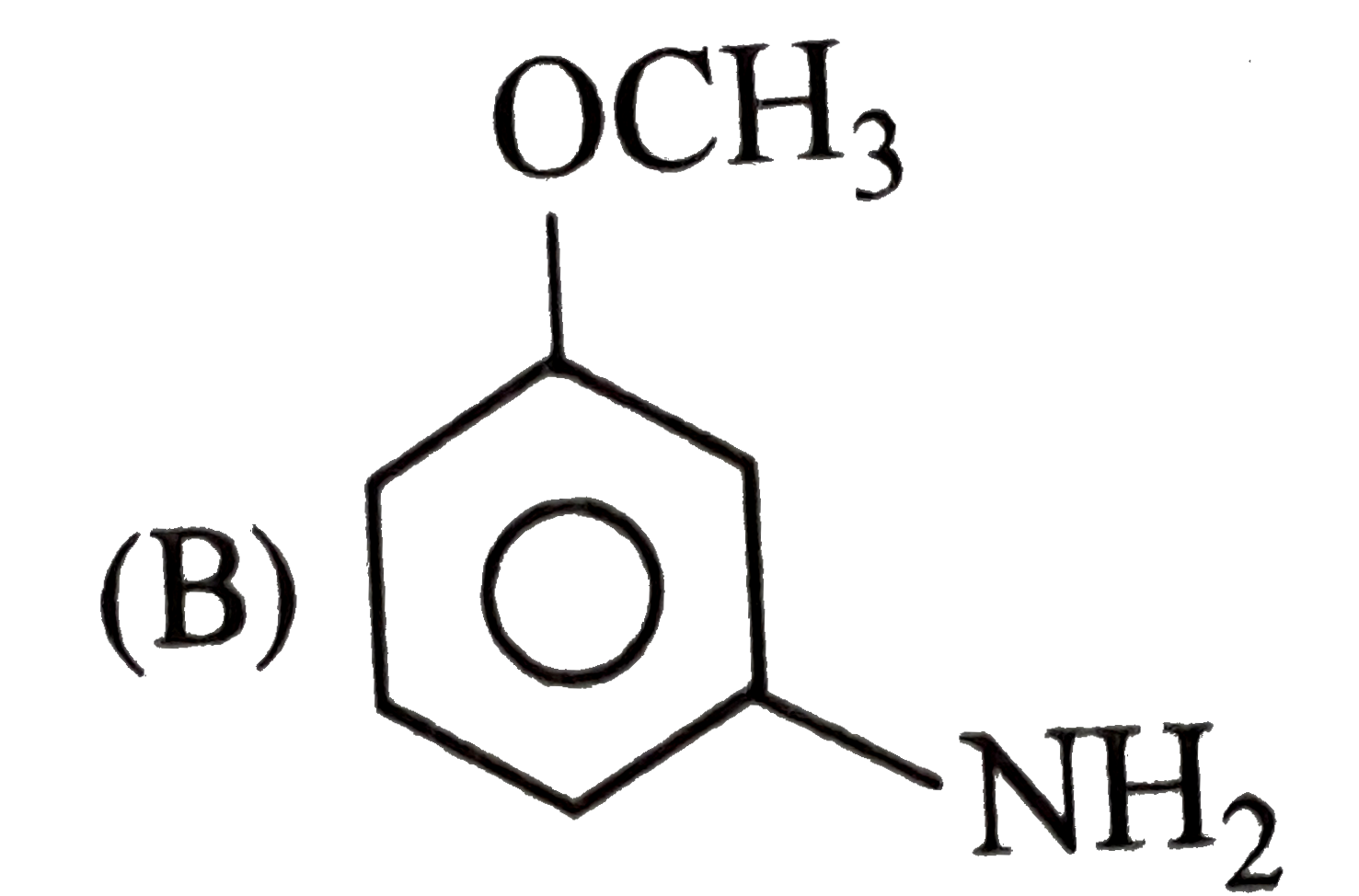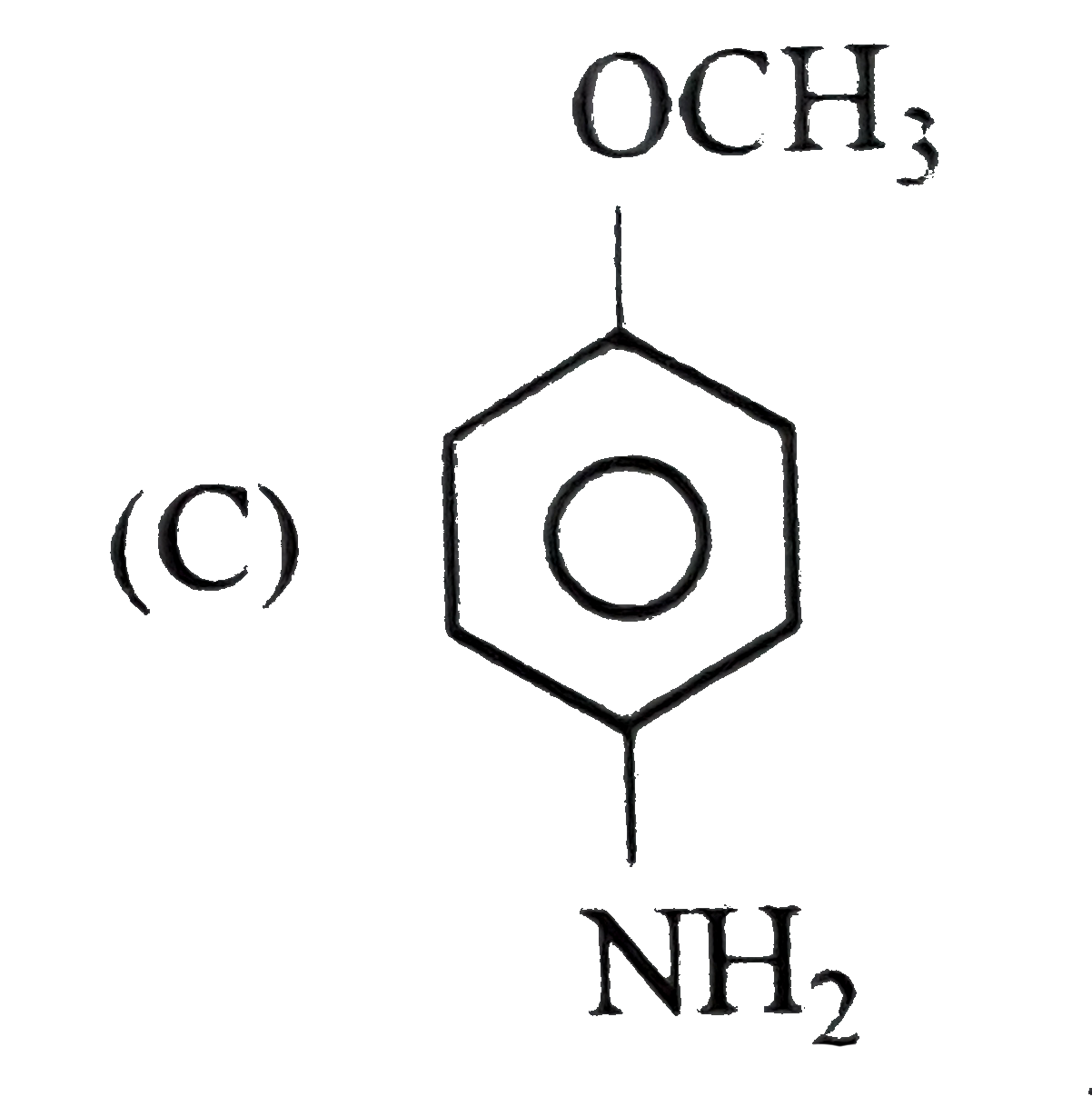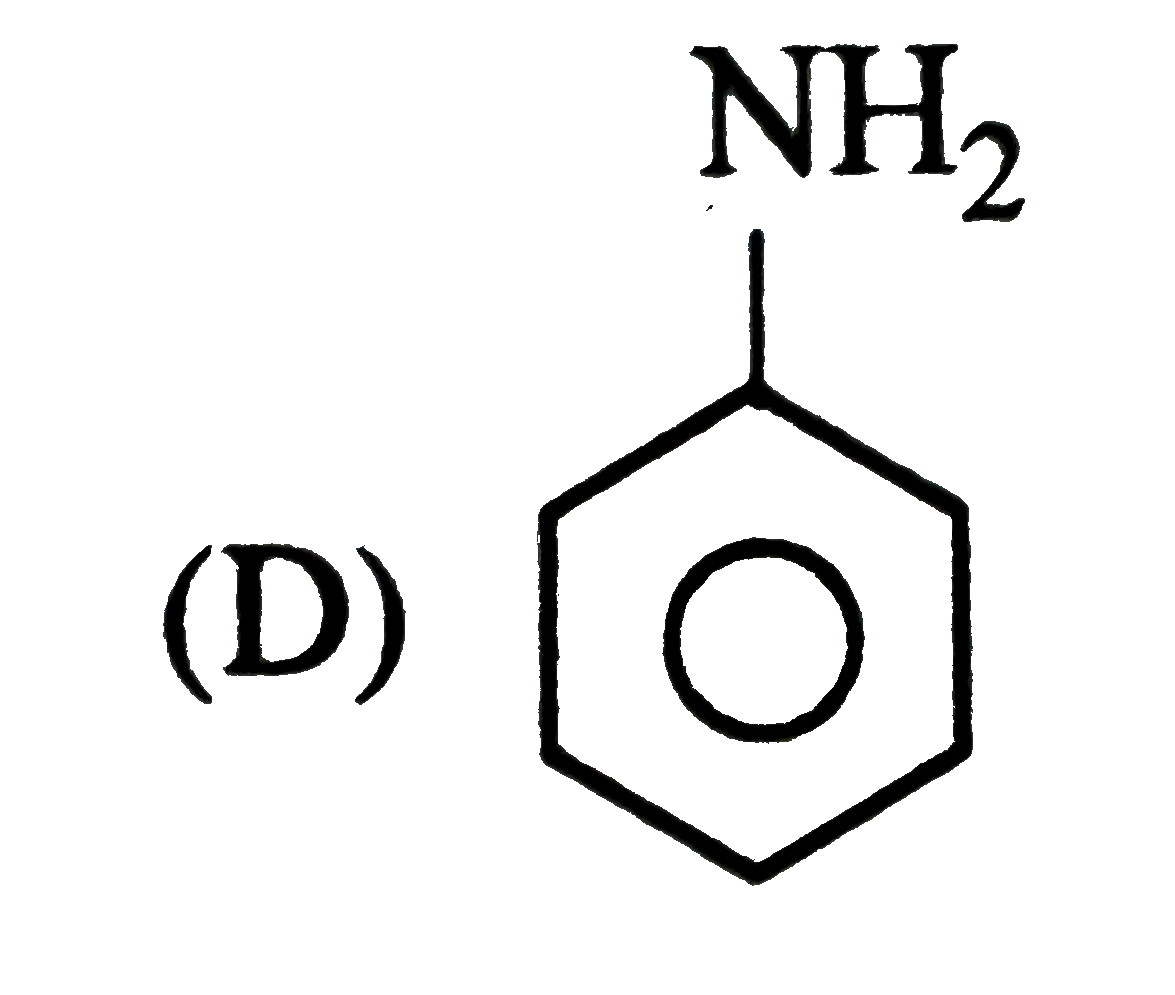Treatment of  with NaNH2/liq.NH3 gives
with NaNH2/liq.NH3 gives




The correct Answer is:D
Reaction proceeds via benzyne mechanism with intermediate as
Similar Questions
Benzene on reaction with HOCl in presence of an acid produces organic compound (A). (A) on treatment with NaNH2/liq. NH3 furnishes another organic compound (B). (B) on treatment with HBF4 affords an organic compound (C) which on heating with NaNO2 gives organic compound (D). Identify (A), (B), (C) and (D).
View SolutionHydrocarbon (A) C6H10 on treatment with H2Ni,H2/Lindlar's catalyst or Na/liq. NH3 forms three different reduction products (B), (C), (D) respectively. (A) does not form any salt with ammonical AgNO3 solution, but (E) forms salt on heating with NaNH2 in an inert solvent. Compound (E) reacts with CH3l to give (F). Compound (D) on oxidative ozonolysis gives n-butanoic acid along with other product.
(F) on ozonolysis will produce -
View Solution
Knowledge Check
Which of the following on treatment with NaNH2 in liquid NH3 gives m-methoxy anlline?
Ao-BromoanisoleBm-BromonanisoleCNone of the aboveDBoth (A) and (B)Which of the following substance on treatment with NaNH2 in liquid NH3 gives m-anisidine
Ao-BromoanisoleBm-BromoanisoleCp-BromoanisoleDNone of theseWhen o-bromoanisole is treated with NaNH2/liq.NH3 , the main product obtained is
A B
B C
C D
D
An organic compound (A) C5H9Br which readily decolourises bromine water and KMnO4 solution gives (B), C5H11Br on treatment with Sn/HCI. The reaction of (A) with NaNH2 produces (C) with evolution of ammonia (C) neither reacts with sodium nor forms any metal acetylide but reacts with Lindlar catalyst to give (D) and on reaction with Na/liq.NH3 produces (E) .Both the compounds (D) and (E) are isomeric. Give structures of (A) to (E) with proper reasoning.
View SolutionWhen C6D5Br reacts with NaNH2/liq.NH3, the product obtained is
View SolutionIn the reaction of p-chlorotoluene with KNH2 in liq. NH3, the major product is
View SolutionHydrocarbon (A) C6H10 on treatment with H2Ni,H2/Lindlar's catalyst or Na/liq. NH3 forms three different reduction products (B), (C), (D) respectively. (A) does not form any salt with ammonical AgNO3 solution, but (E) forms salt on heating with NaNH2 in an inert solvent. Compound (E) reacts with CH3l to give (F). Compound (D) on oxidative ozonolysis gives n-butanoic acid along with other product.
(F) on ozonolysis will produce -
View SolutionIn the reaction of p- chlorotoluene with KNH2 in liq NH3, the major product is
View Solution
